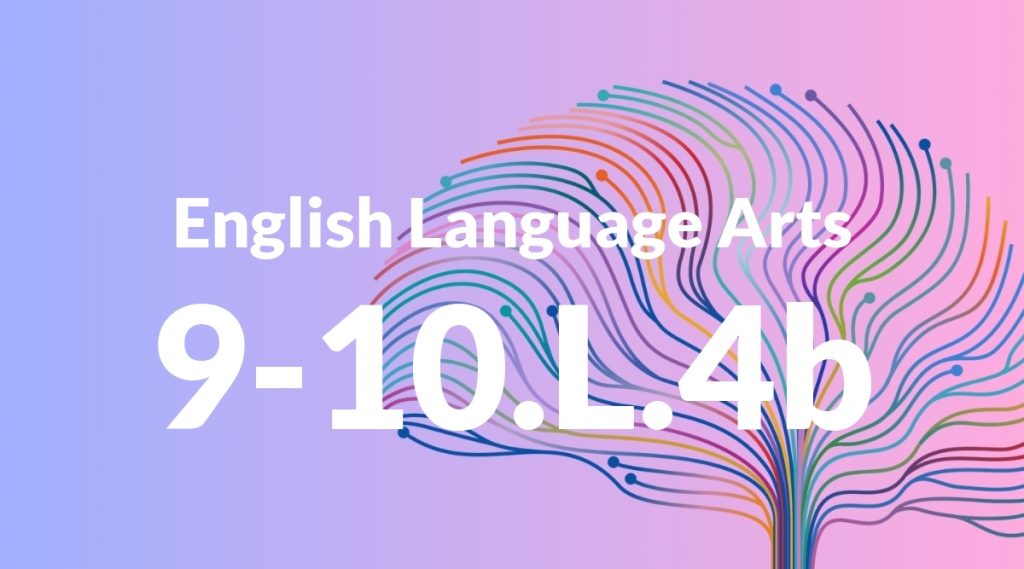Standard: 9-10.L.4b – Identify and correctly use patterns of word changes that indicate different meanings or parts of speech (e.g., analyze, analysis, analytical; advocate, advocacy).
Grade level: Grade 9-10
Subject: English Language Arts
Domain: Language
Teacher Overview
This standard focuses on helping students identify and correctly use patterns of word changes that indicate different meanings or parts of speech. This skill is crucial for understanding and producing complex texts, as it allows students to recognize and use a variety of word forms appropriately. Students should already understand basic parts of speech and how words can change form to serve different grammatical functions.
Mastering this standard will enable students to use more complex word forms and understand nuanced meanings in advanced texts, enhancing their reading comprehension and writing skills.
Common Misconception 1
A common misconception is that all word forms have the same meaning. This is incorrect because each form can serve a different grammatical function and convey a different meaning.
Intervention 1
To address this misconception, use examples and exercises that highlight the different meanings and functions of word forms in various contexts.
Common Misconception 2
Another misconception is that word forms can be used interchangeably without changing the meaning of a sentence. This is incorrect because using the wrong word form can alter the meaning and grammatical correctness of a sentence.
Intervention 2
Provide sentences where incorrect word forms are used and have students correct them, explaining why the changes are necessary.
Prerequisite Knowledge
Students should have a basic understanding of parts of speech (nouns, verbs, adjectives) and how words can change form to serve different grammatical functions.
Subsequent Knowledge
Students will develop the ability to use more complex word forms and understand nuanced meanings in advanced texts, enhancing their reading comprehension and writing skills.
Instructional Activities
- Create a word map that shows different forms of a word and their meanings.
- Have students write sentences using different forms of the same word.
- Conduct a word transformation exercise where students change a sentence by altering the word forms.
- Use reading passages to identify and analyze different word forms.




